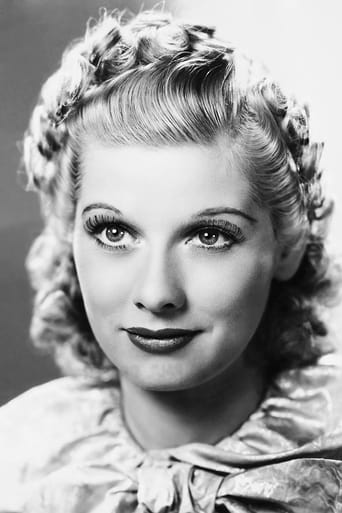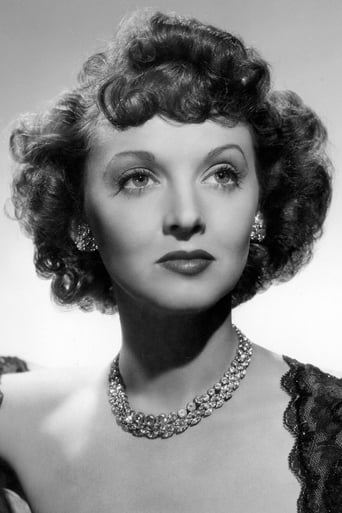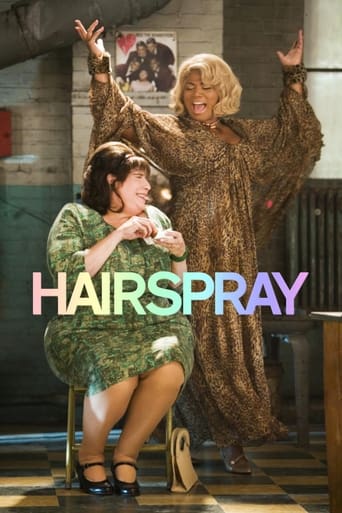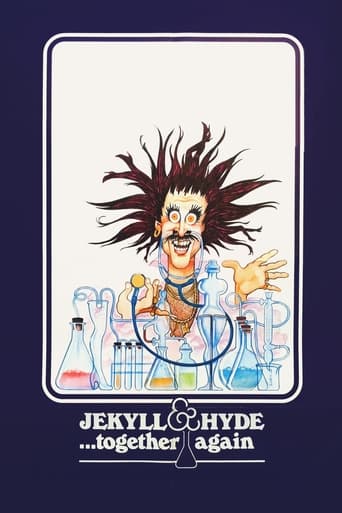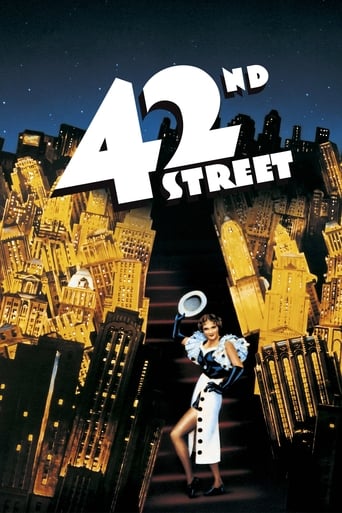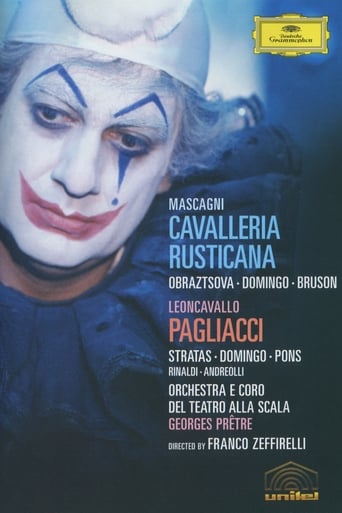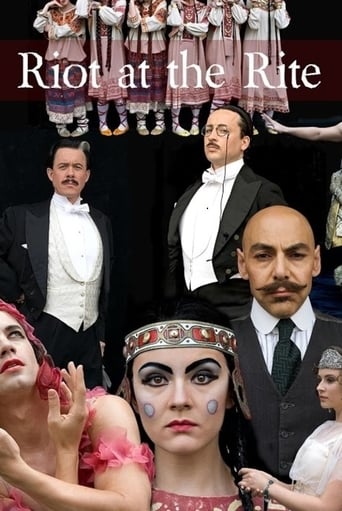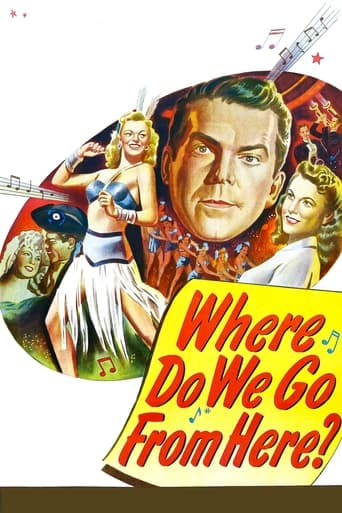
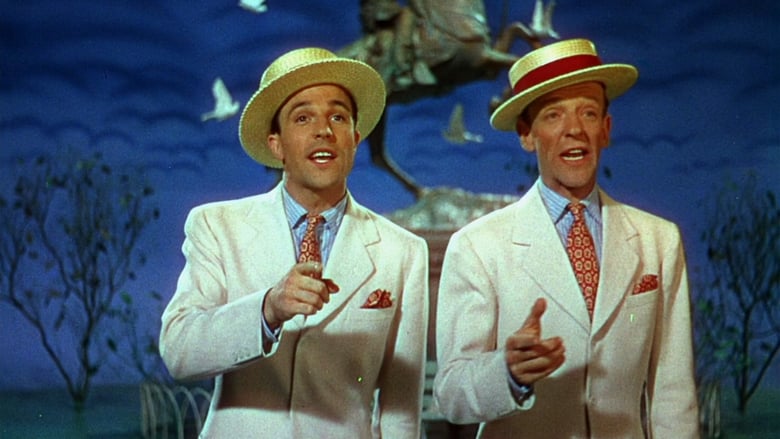
Ziegfeld Follies (1945)
The late, great impresario Florenz Ziegfeld looks down from heaven and ordains a new revue in his grand old style.
Watch Trailer
Cast
Similar titles

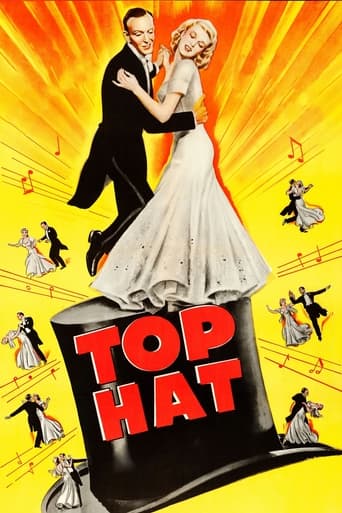
Reviews
You won't be disappointed!
I like movies that are aware of what they are selling... without [any] greater aspirations than to make people laugh and that's it.
It's entirely possible that sending the audience out feeling lousy was intentional
The acting in this movie is really good.
I like the beginning. We see a view through the clouds of heaven. Along the way, Shakespeare has a little place in the sky too. We see Ziegfeld's, a classy little bedroom type of place with a balcony and golden artifacts. William Powell was quite relaxed there while reminiscing and wishing he could go back and do his follies again. Nostalgia is nice. We then see some clay versions of Ziegfeld's shows. There was quite a good clay model likeness, sight and sound, of "To be jolly" (from "The great Ziegfeld") at the theater, Fannie Brice ("ah-ha! I'm an Indian" ), Will Rogers and Eddie Canter (both reprising their roles from "The great Ziegfeld". Rogers with his "well er, I don't have anything funny to say, except er what I read in the papers" and Cantor reprising his performance of "If you knew Suzie"). Here were the following great skits I enjoyed.Fred Astaire and "Bring on the beautiful ladies with a bunch of nice looking gals singing including Virginia O'brien singing nicely and Lucille Ball too. The women that come dancing are a little older. Some may wonder why they didn't use younger women, the reason is is that those middle aged women were real former Ziegfeld girls from the 1910s and 1920s, and I for one really liked that.Katherine Grayson's beauty and lovely singing. I don't understand why so many people in the 21st century dislike opera. The old fashoined music lovers, besides me are few and far between now and not often anyone under 60. Anyway, Katherine Grayson's voice is so beautiful, it's extremely talented, and Katherine is gorgeous in her sweet old fashioned way. The ballroom dancing scene Traviata. Very nice. The music, the girls and their ballroom floorlength gowns were all beautiful. Esther swimming was great as always. Even though her water ballets in "Bathing beauty" and "This time for keeps" were her very best, most of her others were not far behind in greatness. Judy Garland, wonderful and beautiful in so many of her films. Very good here.Fred Astaire and Gene Kelly's skit. This is one of the only times when those two fabulous golden agers starred together. How can that not be great?The Fanny Brice part was hilarious. I liked Fanny in her 1930s work including "The great Ziegfeld" and "Everybody sing". Here, she is very funny. She finds her sweepstakes ticket is a winner. Her reaction is funny when learning what her daft husband did. Husband: "I was short $2.50 paying the rent so I gave the landlord our sweepstake ticket Fanny: "so what" (suddenly gasps in surprise, angry) "Honey, you should drop dead!" Husband: "I thinking of jumping out that window" Fanny: "who's stopping you?". All funny. Then the amusing tactics of Fanny and husband trying numerous ways to get the ticket back. Very good funny segment.The Kenan Wynn skit was pretty good. He gets increasingly frustrated during a phone call while trying to connect a number with an operator who kept jerking him around in amusing ways but was linking up everyone around him just fine on their phone calls. And Kenan finally gettong so frustrated he starts eat the phone. It was funny. I also liked Kenan in some of his other stuff though, such as "Neptune's daughter" and "Me and my gal" with Judy.The Red Skeleton skit was only fair. He wasn't as good as he's been in some of his other stuff such as in Esther Williams' "Neptune's daughter" and "Bathing beauty" (the ballet class scene in that film was hilarious). The Victor Moore "Just pay the two dollars!" skit was a funny idea that had a lot of funny jokes in it. But Victor Moore is just too whiny. He's also too whiny in "Gold diggers 37" which put a bit of a damper in that otherwise great film.Overall, this was another very good old time classic film
Lucille Ball excellent. Cracking that whip. Dressed in pink. Those cats. Meow.Tap extravaganza with Astaire and Kelly. Too awesome. A pairing for the ages.Booze Skelton sketch delightful, and memorable.Two dollars. I always remember that one.Charise beautiful pointe ballet dancer. Also great pair dancers were Bremer and Astaire.O'Brien always excellent in her deadpan singing -- witness The Harvey Girls.William Powell great, as always. I liked the heavenly Shakespeare, Barnum and Ziegfeld motifs, as well as the dolls in the beginning. These dolls are so darling and lifelike.This movie was released the year I was born. The War -- World War Two -- was over, and people wanted to relax and enjoy life. The actual Ziegfeld had actually passed away the previous decade, the victim of bankruptcy and IMO the First World War taking away his audience and subsequently causing more people to leave the old ways behind (live performances) and prefer silent and then sound films.In real life, it is said that Ziegfeld's wife, Billie Burke, went back to work to pay Ziegfeld's bills -- he apparently was wiped out in the Stock Market Crash of 1929. He passed away a few years later. Billie had been a stage star in New York City for Charles Frohman pre-World War One, married Ziegfeld and retired from performing (to Frohman's disapproval and disgust). She had a daughter with Ziegfeld named Patricia. You will see Billie in some 1930s and 1940s films, including the blockbuster The Wizard of Oz -- portraying Glinda, the Good Witch of the North. She looked beautiful in her tall crown and pink gauzy gown in that movie, and in other movies she was well known for portraying her ditzy, comedic, goofy society matrons.This movie portrays the deceased Ziegfeld as living in the lap of luxury, but his real life ended, I feel, in near poverty. Still, I enjoyed the heavenly furnishings, etc., near the beginning of this film.I am an historian of theatre and film. I have a B.A. Degree in History. I am also a futurist, meaning that we study the past and discuss trends leading to the future. I have studied theatrical critiquing and cinematic techniques. I enjoy studying the lives of actors and actresses, in stage, film and television, both present and past, but especially in the past.I enjoy historical films, as well as song and dance musicals. This film fits these categories.10/10
ZIEGFELD FOLLIES (Metro-Goldwyn-Mayer, 1945), directed by Vincente Minnelli (along with several others for individual productions and skits) is not exactly a sequel to the studio's own Academy Award winning biography, THE GREAT ZIEGFELD (1936), but another by name only tribute to the legendary Broadway impresario, Florenz Ziegfeld (1969-1932). Unlike the original three-hour spectacle and its follow-up story ZIEGFELD GIRL (1941), which looked into the personal lives of three fictional Ziegfeld showgirls, ZIEGFELD FOLLIES contains no story. Technically an all-star musical revue with an ensemble of current MGM stars, it's a wonder why it wasn't titled ZIEGFELD FOLLIES of 1946 as originally intended or possibly THE NEW ZIEGFELD FOLLIES for that matter. The only story involved is its ten minute prologue featuring William Powell reprising his original role of "The Great Ziegfeld." While Ziegfeld dies at the finish of THE GREAT ZIEGFELD, ZIEGFELD FOLLIES keeps the original Ziegfeld alive through his "heavenly days," reminiscing about the "good old days" starting with his first Follies of 1907 that introduced his first discovery, French actress Anna Held, in her signature number, "It's Delightful to be Married." Rather than featuring actors re-enacting personalities of the past, other noted Ziegfeld discoveries of Marilyn Miller, Fannie Brice, Will Rogers and Eddie Cantor singing "If You Knew Susie," are cleverly presented as miniature caricature doll-like replicas through the creation of Bunin's Puppets. With the legendary Broadway shows "Sally," "Show Boat" and "Whoopee" behind him, Ziegfeld, looking down on Earth from the heavens in extravagant red robe, wonders what it would be like to produce just one more Follies. After selecting Fred Astaire the logical choice to introduce his new follies, the revue begins with Ziegfeld seen no more:ZIEGFELD DAYS: In his tribute to Ziegfeld and he "Glorifying the American Girl." Fred Astaire goes into his song, "Bring on the Beautiful Girls" followed by Cyd Charisse (ballet dancer), Lucille Ball (circus ring leader) and an assortment of beautiful girls. Virginia O'Brien finishes the number by singing to "Here's to the Wonderful Men." WATER BALLET: Esther Williams; NUMBER PLEASE (comedy skit) directed by Robert Lewis: KEENAN WYNN, with Grady Sutton; Giuseppi Verdi's LA TRAVIATA: With James Melton and Marion Bell singing "Liabiamo Nelieti Calici"; PAY THE TWO DOLLARS: (comedy skit) starring Victor Moore, Edward Arnold; THIS HEART IS MINE: A dance story starring Fred Astaire (The Imposter); and Lucille Bremer (The Princess); THE SWEEPSTAKES TICKET (comedy skit) directed by Roy Del Ruth: Fannie Bruce (Nora Edelman); Hume Cronyn (Monty Edelman); William Frawley (Mr. Martin, the landlord); LOVE, directed by Lemuel Ayres, sung by Lena Horne; WHEN TELEVISION COMES, (comedy skit) directed by George Sidney, with Red Skelton spoofing television commercials; LIMEHOUSE BLUES: Dramatic pantomime with Fred Astaire (Tai Long); Lucille Bremer (Moy Ling); THE INTERVIEW, directed by Vincente Minnelli, choreography by Charles Walters. Judy Garland (Movie Star) with ensemble of male dancers and reporters; THE BABBIT AND THE BROMIDE (music and lyrics by George and Ira Gershwin), with Fred Astaire and Gene Kelly; THERE'S BEAUTY EVERYWHERE (finale) Kathryn Grayson.While the top-name stars get to appear in only one stage performance, Fred Astaire gets the most of his four musical segments, two opposite Lucille Bremer. The most famous and admired happens to be "The Babbit and the Bromide," pairing Astaire with another legendary dancer, Gene Kelly. Though these two legends never team up again for an actual motion picture musical, they worked together once more as hosts for another MGM tribute, THAT'S ENTERTAINMENT PART II (1976). Judy Garland, one of the top stars of the MGM lot, would have been expected to appear in a few song numbers. Instead, she gets only one, THE INTERVIEW, which provides her with something unlike anything she's done before, that of a celebrity sophisticate. Lena Horne stands out in her solo number as does Kathryn Grayson for a grand finale with assortment of beautiful girls, in the great Ziegfeld tradition. Of the three comedy skits, the best comes from Fannie Brice, the only member in this revue who was part of original Ziegfeld follies. While Keenan Wynn's "Number Please" is best associated with comedian Lou Costello's phone segment from WHO DONE IT? (Universal, 1942), Costello and his teammate, Bud Abbott, would have made a hilarious pair for "Pay the Two Dollars," as performed by Edward Arnold (The Lawyer) and Victor Moore (The Client). In its present proceedings, the skit is well staged with Arnold and Moore getting the laughs here. Though it was nice having William Powell playing Florenz Ziegfeld again, his opening introduction in Heaven really wasn't necessary, though possibly the only way to get an outlook on Ziegfeld for the benefit of those unfamiliar of his name and accomplishments. Far from an original premise considering how movie musical revues of this type originated during the dawn of sound. MGM started it all with "The Hollywood Revue of 1929" which lead to imitators by other studios, including THE SHOW OF SHOWS (Warners, 1929); PARAMOUNT ON PARADE (Paramount, 1930) and Universal's THE KING OF JAZZ (1930). Since then, technology in movie making improved considerably, with carefully stage production numbers and lavish Technicolor being its main assets. Rather than the presence of master(s) of ceremonies, ZIEGFELD FOLLIES, does one better introducing individual acts through the turning of title pages of listed casting credits. Being more MGM than Ziegfeld, the goal for ZIEGFELD FOLLIES is entertainment, and it delivers in the best MGM style. Distributed to home video in the 1990s, and occasionally broadcast on Turner Classic Movies cable network, the DVD offering of ZIEGFELD FOLLIES offers some really interesting background and making of the movie, along with three surviving audio segments that never made it to the final print. That's entertainment. (***1/2)
I missed this film when it was first released just after the war ended, but I noted the incredible array of stars featured and decided to watch it whenever a suitable opportunity offered. However it dropped out of attention before this occurred, and it was only very recently that I noticed it was scheduled to be screened again by TCM on television. I therefore took the opportunity to see it at last. After watching for a few minutes I felt I knew exactly what was being shown - it was an overlong and very tedious T.V. advertisement for MGM Studios that took the form of unrelated sequences featuring the various stars they had under contract. Whether it was more acceptable on the big screen I do not know as I never saw it there, but even if it were to be shown in a local cinema again I would certainly not be prepared to pay good money in order to find out.On television, the longer it ran the clearer it seemed that my initial impression was precisely correct. The only link provided between the various sequences was the attempt to parade them in the form of a Broadway show devised in Heaven after his death by Ziegfeld himself - presumably so that we were encouraged to think of him as remaining an honorary member of the MGM Studio team. The various stars who were "encouraged " to take part in this travesty of a film probably felt quite ashamed of their part in it. It was nominally directed by Vincente Minnelli, but history appears to indicate that he should not be too severely blamed. I understand that he had no part in directing the totally disastrous first segment, and he was only responsible for some of the others, even during these he has been reported to have been on a very tight rein. He too I am sure would prefer his no doubt enforced role in this film to be quickly forgotten.Out of kindness to the talented and hardworking participants who clearly tried very hard and deserved much better, I will rate this at 3. For a film buff this is almost certainly justified by the sequence starring Fred Astaire and Gene Kelly dancing together. I believe this is the only film in which this occurs and, apart from the great opportunity to admire the incredible timing they both showed, it was extremely interesting to be able to compare their very different techniques at such close quarters. But the rest is best quickly forgotten.
